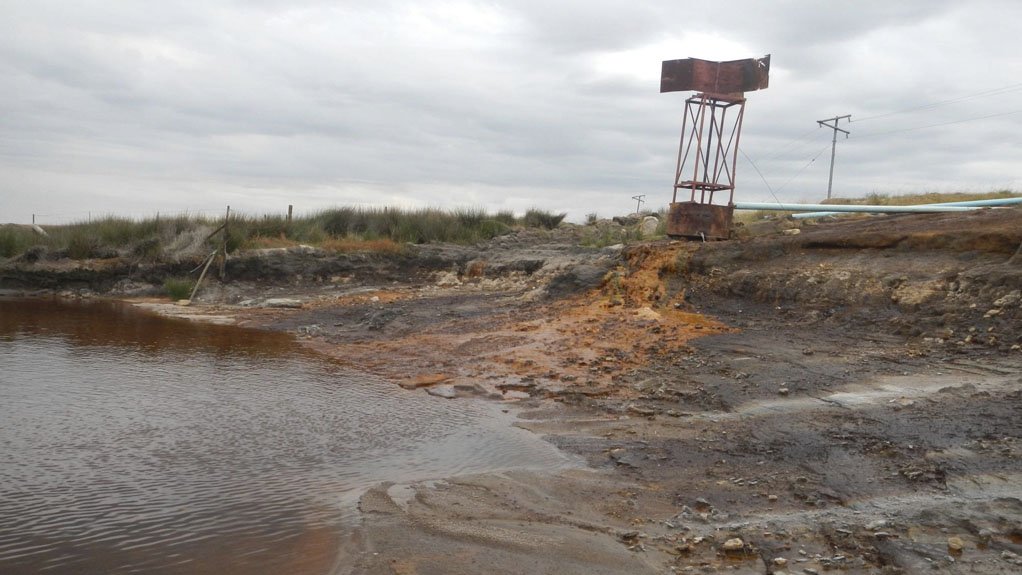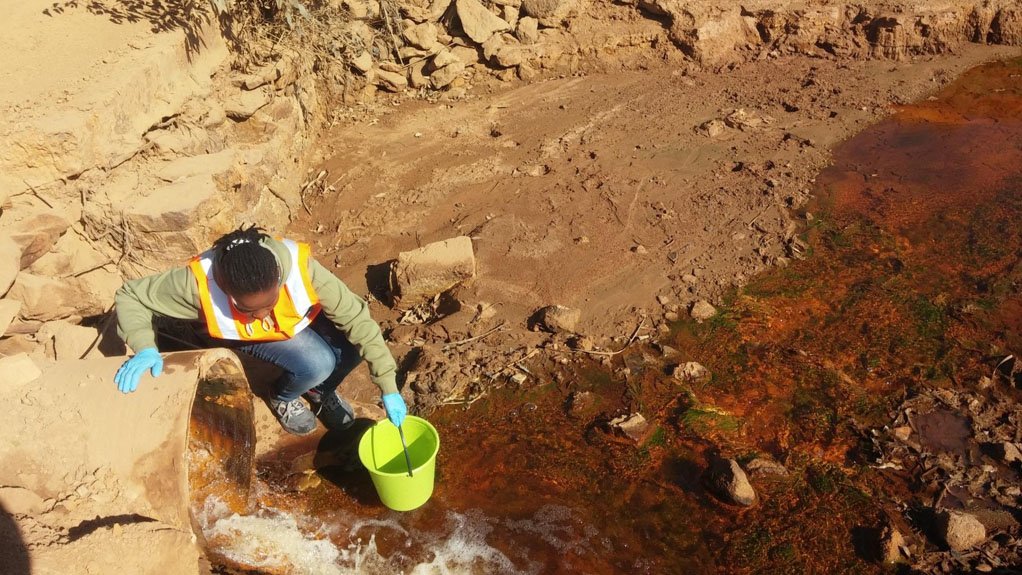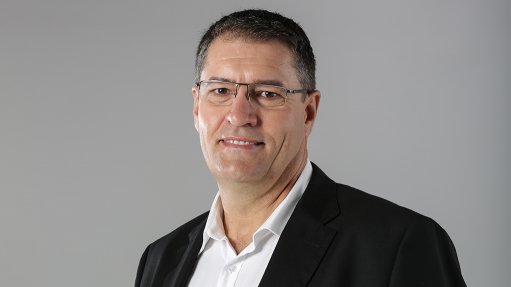Passive treatment may hold key to tackling AMD challenge – geoscientist



CAUSE FOR CONCERN Hazardous metals such as aluminium, iron and manganese may currently be entering the country’s streams and rivers, threatening its limited water resources
SOLUTIONS URGENTLY NEEDED Treatment methods for remediating acid mine water need to be tested in the laboratory and understood for better comparison in terms of their efficiency
Abandoned coal mines have contributed to the generation of acid mine drainage (AMD) in South Africa, states Council for Geoscience environmental geoscientist Gloria Dube.
AMD is characterised by lowered pH levels of less than 4, high sulphate concentrations and high acidity levels.
Dube highlights that potentially hazardous metals such as aluminium, iron and manganese may currently be entering the country’s streams and rivers, thereby threatening the limited water resources.
“Therefore, short- and long-term treatment of AMD is critical,” Dube emphasises. She comments that treatment methods for remediating acid mine water need to be tested in the laboratory and understood for better comparison in terms of their efficiency in treating acid mine water before piloting and implementing these methods in the field.
She says that passive treatment technologies for remediating AMD have been investigated, demonstrated and implemented in different parts of the world. Dube notes that such methods can function in remote areas at a low cost of operation, monitoring and maintenance and are therefore practical for setting up on abandoned mine sites.
Passive treatment systems such as anoxic limestone drains (ALDs), aerobic or anaerobic wetlands, open limestone channels, sulphate- reducing bioreactors and successive alkalinity-producing systems, otherwise known as SAPS, have been used to treat acid mine water efficiently.
However, Dube points out that limitations such as coating and clogging as a result of Al3+ and Fe3+ oxyhydroxide precipitates have been experienced, resulting in the passivation of the alkaline substrate, which ultimately leads to a failure of the system.
She notes that, in 2008, dispersed alkaline substrate (DAS) systems were introduced in Spain with the intention of solving the clogging problems associated with most of the passive treatments. A DAS system is composed of a coarse matrix, such as wood shavings, mixed with a fine-grained alkaline material, such as limestone.
Dube explains that the wood shavings are intended to provide and maintain high permeability, while the limestone provides a bulk reactive surface area, where it will dissolve and react with AMD before it is coated. The column experiments testing passive treatment systems in the laboratory remediated acid water successfully for 21 weeks, after which the DAS system clogged while the reducing and alkalinity-producing system (RAPS) continued to treat AMD successfully.
She comments that, for an evaluation of the treatment systems, water parameters such as pH, electrocoagulation, redox, total dissolved solids and alkalinity of the inlet and outlet were analysed weekly.
Dube adds that water samples were also collected for inductively coupled plasma mass spectrometry analyses to identify concentrations of metals and metalloids.
Moreover, she highlights that X-ray powder diffraction and X-ray fluorescence analysis were used for the reactive material (limestone) for minerals and elements (trace and major elements) identification and concentrations before and after use respectively.
Dube says that the overall aim of the study is to investigate the effectiveness of the recent DAS system in treating AMD from an abandoned coal mine in eMalahleni, in Mpumalanga, and to compare it with the traditional RAPS, which has been investigated and implemented in many other parts of the world.
She says that the RAPS, which is the combination of anoxic limestone drains and compost wetlands, is one of the traditional treatment options for net-acidic mine water treatment.
Additionally, Dube points out that both treatment systems were able to raise the pH from an average of 3 to 8, which is neutral water within the water quality standards of South Africa.
The two passive systems were able to reach reducing conditions in the systems, which slow down or completely stop the oxidation processes. Contaminants such as iron, aluminium and zinc were completely removed.
Nonetheless, she notes that manganese concentrations, although reduced, were still above the water quality standards. Additionally, there was minimal high sulphate reduction in both treatment systems.
“Nevertheless, the issue of longevity as a result of clogging . . . is still in question,” Dube concludes.
Comments
Press Office
Announcements
What's On
Subscribe to improve your user experience...
Option 1 (equivalent of R125 a month):
Receive a weekly copy of Creamer Media's Engineering News & Mining Weekly magazine
(print copy for those in South Africa and e-magazine for those outside of South Africa)
Receive daily email newsletters
Access to full search results
Access archive of magazine back copies
Access to Projects in Progress
Access to ONE Research Report of your choice in PDF format
Option 2 (equivalent of R375 a month):
All benefits from Option 1
PLUS
Access to Creamer Media's Research Channel Africa for ALL Research Reports, in PDF format, on various industrial and mining sectors
including Electricity; Water; Energy Transition; Hydrogen; Roads, Rail and Ports; Coal; Gold; Platinum; Battery Metals; etc.
Already a subscriber?
Forgotten your password?
Receive weekly copy of Creamer Media's Engineering News & Mining Weekly magazine (print copy for those in South Africa and e-magazine for those outside of South Africa)
➕
Recieve daily email newsletters
➕
Access to full search results
➕
Access archive of magazine back copies
➕
Access to Projects in Progress
➕
Access to ONE Research Report of your choice in PDF format
RESEARCH CHANNEL AFRICA
R4500 (equivalent of R375 a month)
SUBSCRIBEAll benefits from Option 1
➕
Access to Creamer Media's Research Channel Africa for ALL Research Reports on various industrial and mining sectors, in PDF format, including on:
Electricity
➕
Water
➕
Energy Transition
➕
Hydrogen
➕
Roads, Rail and Ports
➕
Coal
➕
Gold
➕
Platinum
➕
Battery Metals
➕
etc.
Receive all benefits from Option 1 or Option 2 delivered to numerous people at your company
➕
Multiple User names and Passwords for simultaneous log-ins
➕
Intranet integration access to all in your organisation




















